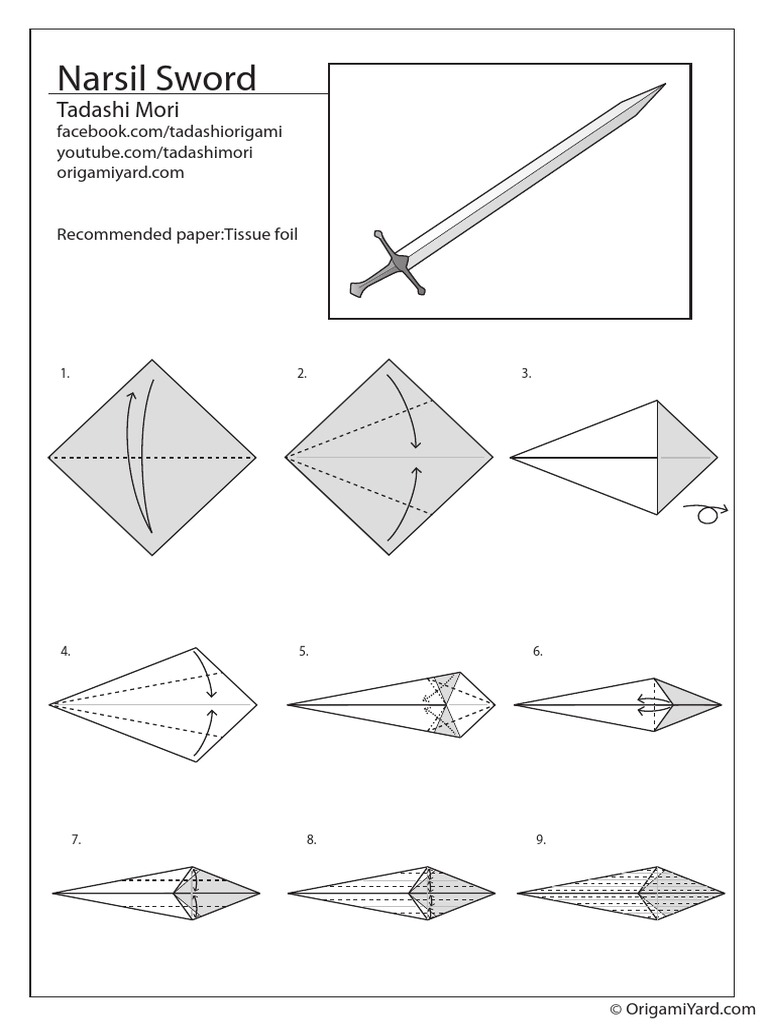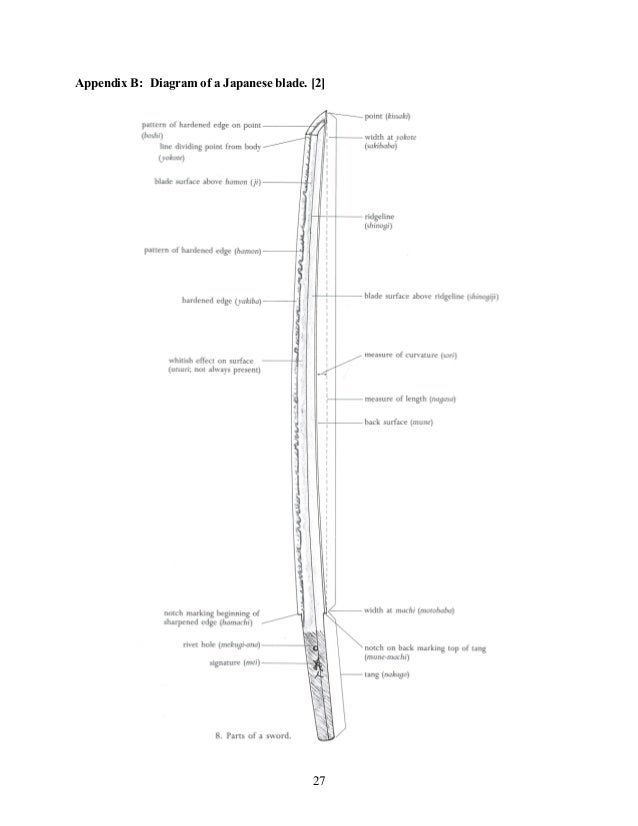Tiger Folded Classic Katana. The habaki helps lock the tsuba in position sometimes with the aid of seppa or spacers.

I Ve Studied This Before But It S Been A While This Is A Good Diagram Tho Sword Parts Katana Samurai Swords
Pronounced kah-tah-nah in the kunyomi Japanese reading of the.

Katana folding diagram. Locate f ffolding on the folding diagram as plotted belowNote. The habaki is a wedge shaped metal collar used to keep the sword from falling out of the saya and to support the fittings below. Calculate the folding frequency ffolding fs 2.
The katana itself is folded from a single square of paper and the scabbard is also folded from a single square of paper. Japanese blacksmiths began producing these swords with the same techniques as the Katana including the use of differential heat treatments multiple blade folds and tamahagane steel. For values of f ffolding greater than 50 the folding diagram can.
For large vehicle movements you can push all the doors in and create more space. Folding Diagram for Aliasing Calculations Instructions for using the folding diagram. Fitted at the ha-machi and mune-machi which precede the nakago.
Draw an edge connecting i to j if they arenot orthogonal. A curved single-edged sword traditionally used by the samurai. The Katana watch measures 45mm wide 134mm thick and 504mm lug-to-lug.
A diagram of a katana and koshirae with components identified. It is also used specifically for a type of Japanese backsword or longsword 大刀 daitō in use after the 1400s. Tori XL Light Katana.
A diagram of all the different named parts of a katana Conventional methods of forging a katana involve cutting it from a sheet of purified steel. Japanese sword blades were often forged with different profiles different blade thicknesses and varying amounts of grind. Japanese swordsmithing is the labour-intensive bladesmithing process developed in Japan for forging traditionally made bladed weapons including katana wakizashi tantō yari naginata nagamaki tachi nodachi ōdachi kodachi and ya.
Wakizashi and tantō were not simply scaled-down katana. The beauty of these gates is that they can be installed anywhere irrespective of the terrainDepending on the requirements you can go for single or double track or even choose to go trackless. The habaki also locks the blade into the saya scabbard holding it in place so the katana will not easily slide out.
Habaki 鎺. Fuchi 縁. Below are some diagrams to show the case dimensions.
Practical Plus XL Katana. The OpenLab is an open-source digital platform designed to support teaching and learning at City Tech New York City College of Technology and to promote student and faculty engagement in the intellectual and social life of the college community. Diagrams available in the 21st Tanteidan Convention book Sebastian Arellano designed a really great origami katana.
Rank 2 Root Systems Dynkin Diagrams Levi Subgroups Extended DD Root Folding Sage The Dynkin diagram The Dynkin diagram is a graph whose vertices are the simple roots. And then tempering the blade with water or oil. Katana 刀 is the word for sword in the Japanese language.
Folding gates can be operated in any way you want to restrict pedestrian entry. For the extended Dynkin diagram we add a node for 0. Diagram showing the parts of a katana.
The above diagrams show the case dimensions on the watch. Diagrams for many models including an angel Edward Scissor-hands coat black belt in origami fantasy mask Santa Claus heart vampire Valentine dollar bill fold wheelchair waterlily leaf Kawasaki rose pine tree King Kong jumping frog pencil waterbomb biplane barracuda F-102 plane lunar lander little plane forgiving glider flying saucerUFO throwing starshuriken boat catamaran ship. A database of paper airplanes with easy to follow folding instructions video tutorials and printable folding plans.
We often use a dashed line for connections of 0. A simply-laced Dynkin diagram finite or affine that has a symmetry satisfying one condition below can be quotiented by the symmetry yielding a new generally multiply laced diagram with the process called folding due to most symmetries being 2-fold. The Wakizashi has a long and rich history dating back to the 15th and 16th centuries.
Find the best paper airplanes that fly the furthest and stay aloft the longest. The habaki is the metal piece that wraps around the base of the blade next to the tsuba. The Katana watch measures 45mm wide 134mm thick and 504mm lug-to-lug.
T10 Folded Clay Tempered Steel Japanese Wakizashi Creation of the Wakizashi. The set also comes with a Katana blade made of 77 layers of hand forged Damascus Steel. Synaptics Katana block diagram.
The Habaki – Parts of a Japanese Katana. Working the metal into shape. The fuchi is a hilt collar between the tsuka and the tsuba.
While many eyes including mine were on CES this week today I wanted to talk about a tech announcement that.

Japanese Sword Mountings Wikiwand

Step By Step Instructions To Make An Origami Sword Craft Cue
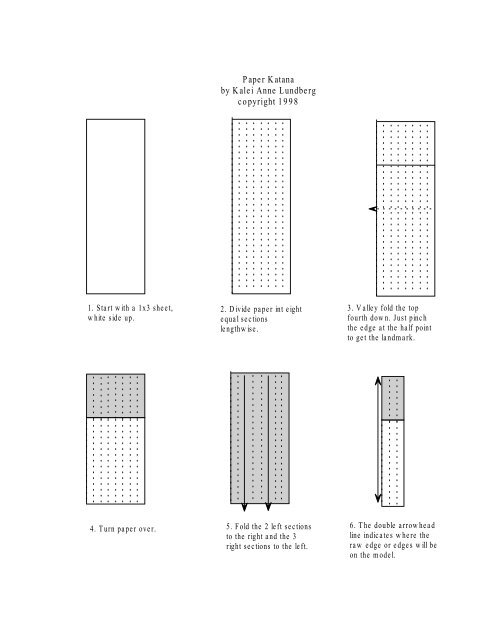
Paper Katana By Kalei Anne Lundberg Copyright 1998 Origami

Swords World Japanese Katana Construction

Origami Weapons And Armour You Could Almost Take Into Battle

How To Make A Origami Samurai Sword

Katana Sword Parts Vector Photo Free Trial Bigstock
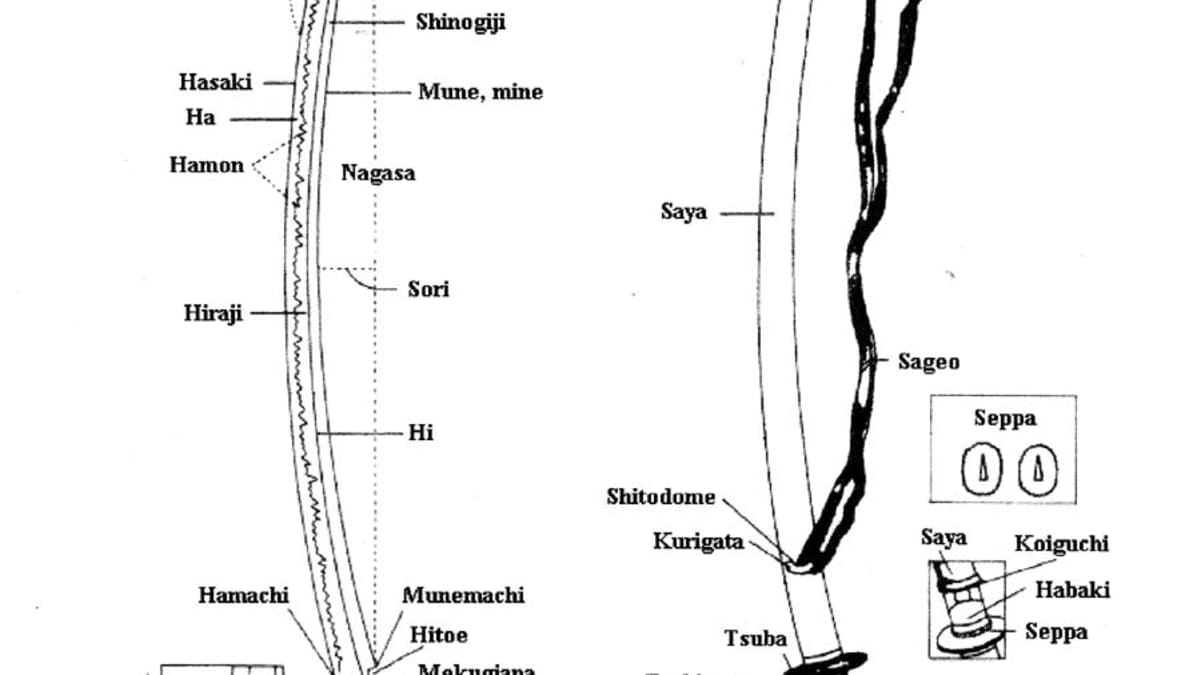
Japanese Katana An Introduction Hubpages

Step By Step Instructions To Make An Origami Sword Craft Cue
The 3 Layers Of The Katana S Martialartswords Com
Cross Section Of A Traditional Japanese Sword Different Blade Compositions Damnthatsinteresting

Sword Guide Knife Sharpening Samurai Swords Sword

Step By Step Instructions To Make An Origami Sword Craft Cue

Step By Step Instructions To Make An Origami Sword Craft Cue

Samurai Sword Katana Diagram Novocom Top
During The Process Of Making A Katana What Is The Purpose Of Folding The Blade Why Does It Have To Be Folded Quora

